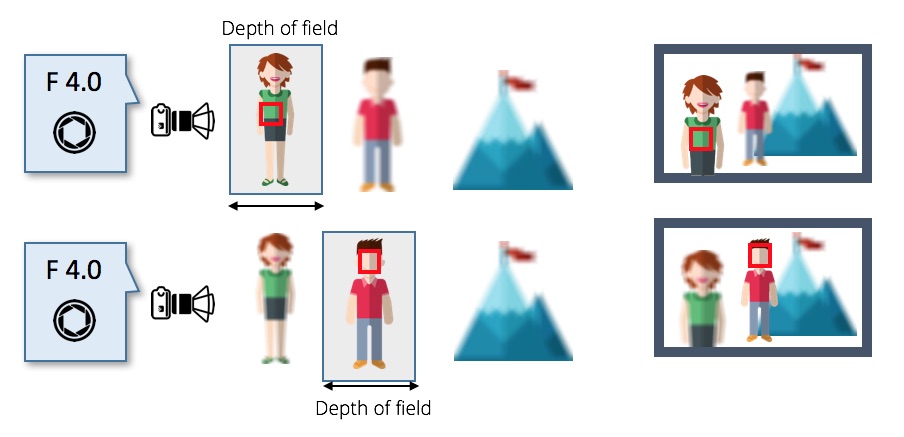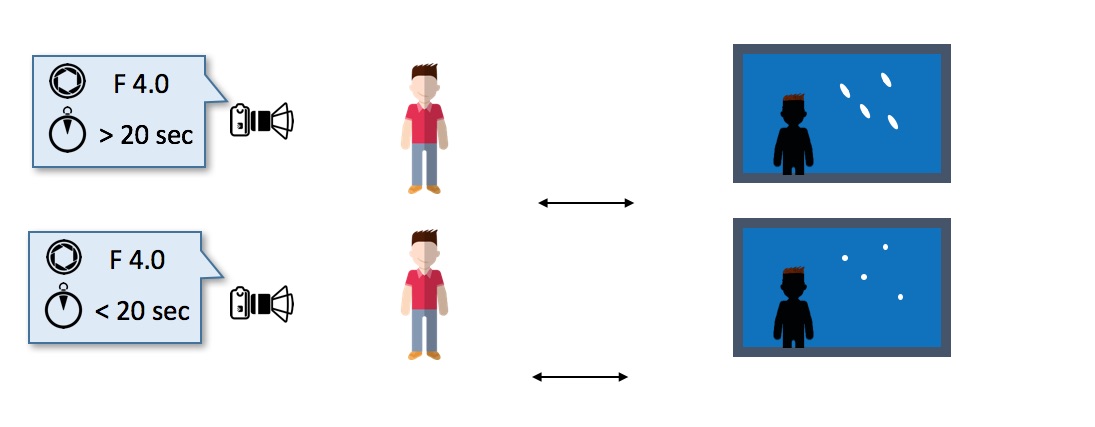

Aperture
The aperture is a hole within a lens that let the let enter the camera body. Controlling the size of the aperture allows the photographer to control the quantity of light. But there is more than just quantity of light.
The size of the aperture will have an impact on the cone of light.
Take a look at this chart

What is Depth of Field?
This is the area of the image that appears sharp. This is directly linked to the cone of light and therefore to the aperture of the lens.
Just look at the aperture and the geometry of the light.
In the case of a wide Aperture, the area were the light get focused again is pretty narrow.
In the case of a small aperture, the depth of field is much wider.
Narrow and Wide Depth of Field
Playing with the aperture, you will define your Depth Of Field.
Using F<5.0, you will have narrow DOF. This is excellent to separate the object from the background or foreground.
Using F>9.0 you will be able to have sharp elements in the foreground as well as the background.
But it is not that simple, it also depends on the focal point.
So let's imagine that you have a wide aperture (F 2.8) and you focus on a point very close, your DOF will be literaly a few millimeters wide. and if you focus further, your DOF will be wider. for example at 100 meters your DOF might be 2m wide. for the same Aperture setting
Narrow DOF and focus
Now when you use a narrow depth of field, the focus point becomes critical. Depending at what distance you will focus, all the other elements will be blured.

Aperture and Shutter Speed
Because the Aperture impact the quantity of light allowed in the camera, it will have an impact on the Shutter Speed if we keep the ISO sensitivity at the same level.
So for narrow aperture (F > 9.0) your shutter speed will be higher
Wide Aperture for long exposure
if you are focusing at infinity, you can use the wide aperture (for example F2.8) to reduce the shutter speed keeping the same amount of light reaching the sensor.
This is very useful for night shot with stars. Remember that the earth is a moving planet and anything higher than 20sec exposure speed will potentially result in a slow nothing of the stars. This will result is a small star trail. I find it ugly and you probably should avoid it.

What about diffraction
"Too small of an aperture softens the image by creating a larger circle of confusion (or "Airy disk") due to an effect called diffraction.
Diffraction quickly becomes more of a limiting factor than depth of field as the aperture gets smaller. Despite their extreme depth of field, this is also why "pinhole cameras" have limited resolution."
Reference: http://www.cambridgeincolour.com/tutorials/depth-of-field.htm
Conclusion
TBD
